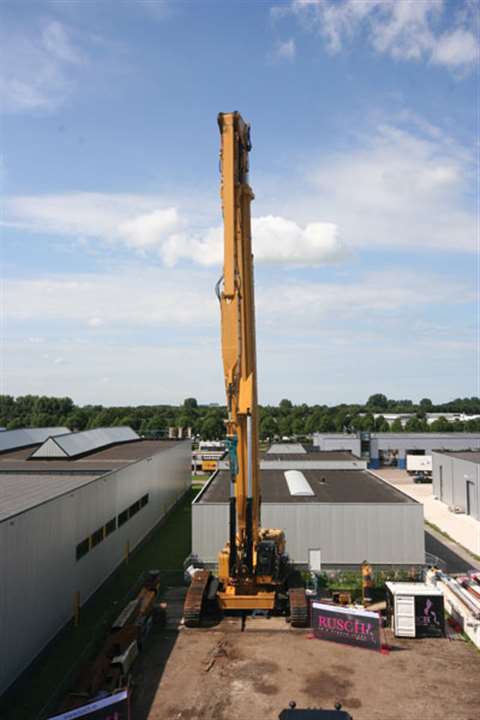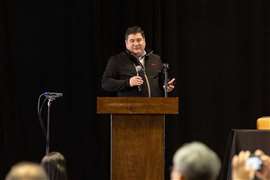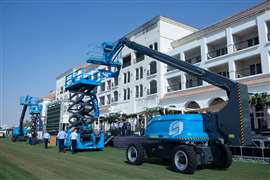Do today's high reach demolition rigs drive a need for updated Guidance Notes?
12 October 2009

Technology always moves on, often outstripping the regulations and guidance that are available to govern its use in day-to-day applications. Could this now be the case with the NFDC's Guidance Notes governing the use of high reach excavators?
When the NFDC's notes were first developed, working heights of even the biggest high reach demolition booms were rarely over the 40 m (132 ft) mark.
Today, it is not unusual for machines to be capable of working at heights in excess of 50 m (164 ft) and of course there is the monster Rusch 90 m (236 ft) TUHD machine (and somebody somewhere is probably looking at 100 m or more).
Telescopic booms are also no longer as rare as in the past, and the weight of the tools being carried and used is increasing beyond what was considered normal at the time of the Notes' initial publication.
So it may well be time for the NFDC to look at updating and amending its document to bring it into line with current ultra-high reach equipment developments.
One example of this is the 2:1 working radius suggested by the Notes - a machine should be half the working height away from the structure being demolished. This would suggest that a 90 m machine working at 60 m should be 30 m (98.5 ft) away from the building it is working on.
However, calculations made by Rusch, backed up by experience gained with the company's earlier 65 m telescopic machine, suggests that this ratio may be too conservative where ultra high reach machines are concerned - the parabolic arc followed by debris falling from such a height is such that the machine can work closer to the structure than the ratio allows.
Rusch managing director Ruud Schreijer said that calculations they have carried out have established that a standoff distance of 27.2 m (90 ft) would be sufficient for the machine to avoid being hit by debris falling from 60 m (197 ft).
However, he did go on to say: "The machine has only worked on a few jobs to date, so it is always possible that with more working experience we may need to modify these numbers, but the physics is sound."
Revision is certainly in the mind of NFDC chief executive Howard Button. He told D&Ri that in his view: "our Guidance Notes are definitely going to need amendment to take account of the machines now finding their way onto today's demolition sites. We need to address the use of super-high reach machines that are currently not covered by the notes at all. Neither do the notes make much, if any, mention about the use of telescopic booms and that also needs to change.
"And finally, we are now beginning to see mid reach machines that can carry very large attachments up to 25 tonnes that were not even on the horizon when the notes were developed."
While there is no question that most operators are skilled and responsible in the use of their equipment, there is also no question that improper use or operation still does occur.
Perhaps the redrafted guidance notes should lay much greater emphasis on the concept of the tool alone being used to carry out the work, rather than the tool, boom and carrier being used in conjunction by the operator.
Today's highest booms are designed solely to lift the attachment to where the demolition is to be carried out. They are not designed to withstand the loads that result from being used to pull on the structure.
The NFDC document currently states that high reach excavators should not be considered as being cranes, but in essence, is that not exactly what they are - a means of lifting a demolition tool to height? Indeed, demolition cranes are precisely what Ruud and his company call their albeit special products.
Could the term 'ultra high reach demolition excavator' be, in fact, a misnomer?






